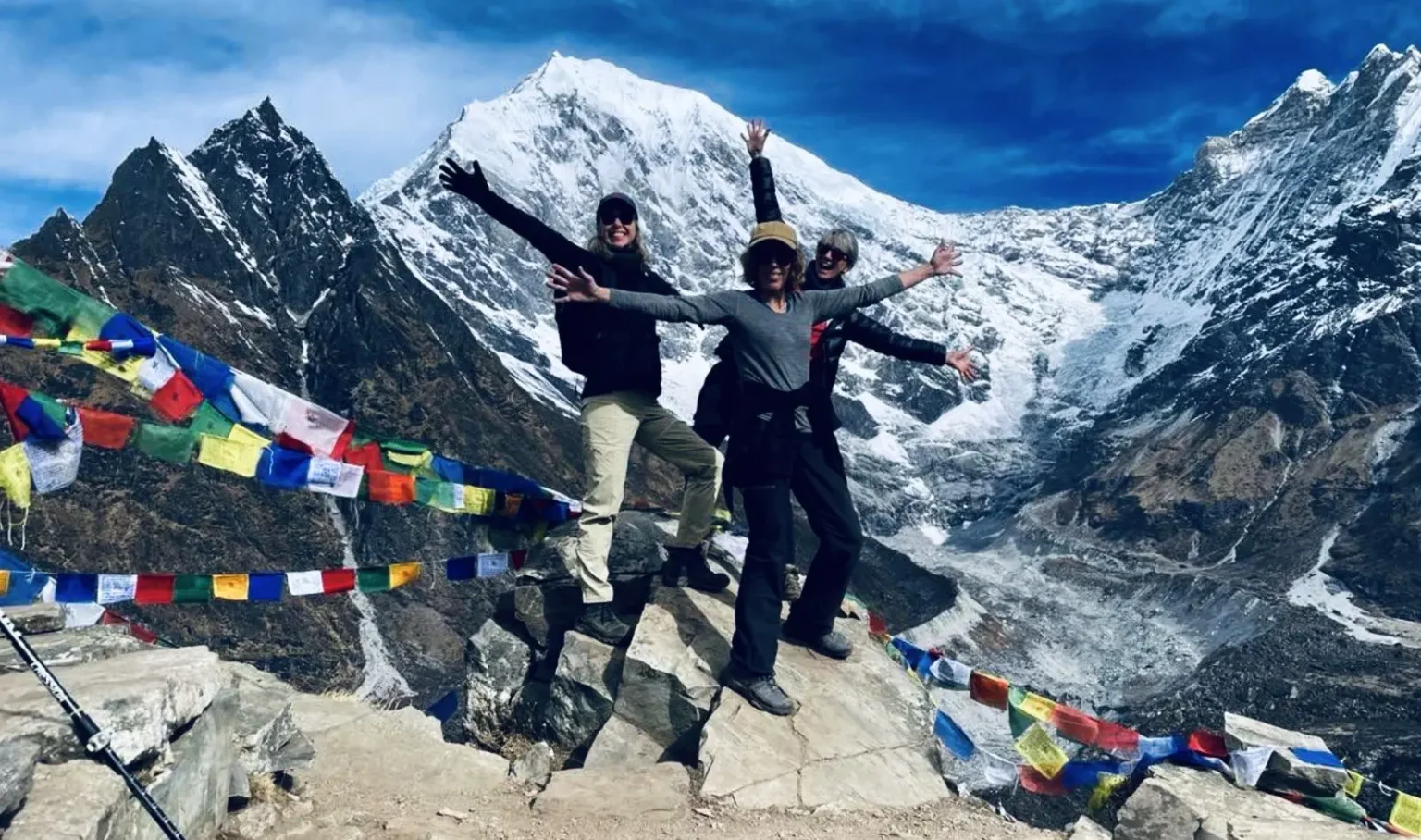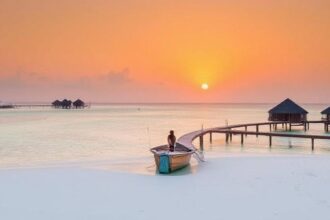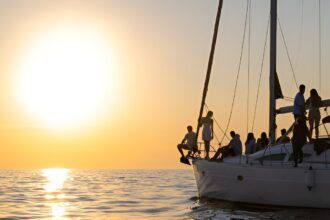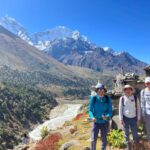Nepal, the arrival of towering Himalayan peaks and old trails, is a trekker’s heaven. With a few of the most notorious and untouched trekking goals in the world, this little South Asian country offers more than fair mountains—it guarantees otherworldly quietness, social inundation, and awe-inspiring excellence. Among its treasure trove of trekking courses, the Everest Base Camp trek, the Langtang Valley trek, and the Manaslu Circuit trek stand as three of the finest ventures any experienced searcher can set out upon.
Each path uncovers a diverse confluence of Nepal, from the incredible base of the world’s tallest mountain to the enchanted valleys near to the Tibetan border. Whether you’re a prepared trekker or a first-timer looking for Himalayan eminence, these trails will leave an enduring impression.
Best Time for Everest Base Camp trek:
The Everest Base Camp trek is, without a question, Nepal’s most celebrated and sought-after trek. Each year, thousands of trekkers from all corners of the globe bind up their boots to take after in the strides of Tenzing Norgay and Sir Edmund Hillary, following the path through Sherpa towns, Buddhist religious communities, cold valleys, and snow-covered passes. In any case, knowing the best time for Everest Base Camp trek is significant to guaranteeing a fruitful and pleasant trek.
There are two fundamental trekking seasons for EBC: pre-monsoon (spring) from March to May, and post-monsoon (harvest time) from late September to early December. Spring is perfect for seeing sprouting rhododendrons, clear skies, and direct temperatures. It’s moreover the top undertaking season, so you might experience mountain climbers acclimatizing for their Everest summit endeavors. Harvest time offers crisper views of the mountains, less precipitation, and a reviving chill in the discussion, making it the most prevalent season for trekking.
Winter (December to February) brings amazingly cold temperatures and snow, particularly at higher heights, making the trek more challenging. In the meantime, the storm season (June to Admirable) is for the most part maintained a strategic distance from due to overwhelming rain, dangerous trails, and decreased perceivability. In this manner, Walk to May and September to November stay the prime windows for a fulfilling and secure trek to Everest Base Camp.
Langtang Valley trek:
Nestled fair north of Kathmandu, the Langtang Valley trek is one of Nepal’s most open, however underrated undertakings. Regularly eclipsed by the more popular Everest and Annapurna regions, Langtang offers an unimaginable mix of snow capped view, social lavishness, and quiet trails—all without the gigantic swarms. This trek is perfect for those looking for a calm, immersive Himalayan involvement inside a shorter time frame.
The trip starts with a picturesque drive from Kathmandu to Syabrubesi, the portal to Langtang National Stop. From there, trekkers take after the Langtang Khola Waterway, passing through rich woodlands of pine and bamboo, cascading waterfalls, and conventional Tamang and Tibetan-influenced towns like Llama Inn and Langtang Town. The annihilation caused by the 2015 seismic tremor has cleared out obvious scars, but the flexible nearby communities have revamped with elegance and determination.
One of the most charming highlights of the Langtang Valley trek is the staggering sea of Langtang Lirung (7,227 m), the most elevated peak in the region. The last rising to Kyanjin Gompa—a otherworldly Buddhist cloister roosted underneath snow-clad giants—is a highlight. Trekkers can pick for a day climb to Tserko Ri (4,984 m) for all encompassing views that equal those on more celebrated routes.
What sets Langtang apart is the association with nearby culture. The Tamang individuals, who share near ties with Tibetan legacy, are unimaginably warm and affable. You’ll discover their impact in the design, cooking, dialect, and day by day traditions. Hand crafted yak cheese, supplication wheels turning in the wind, and colorful mani dividers line the path, making each step meaningful.
Langtang Valley trek ordinarily takes 7 to 10 days and doesn’t require a flight, which diminishes calculated complexity and takes a toll. Whereas spring and harvest time stay the best seasons to trek here, Langtang can moreover be delighted in early winter for those looking for isolation and snow-covered serenity.
Manaslu Circuit trek:
For trekkers in look of crude wild, social realness, and a less-trodden way, the Manaslu Circuit trek is an idealized coordinate. Circling the world’s eighth-highest top, Mount Manaslu (8,163 m), this trek is regularly portrayed as an inaccessible elective to the Annapurna Circuit, advertising a similarly sensational view with less crowds.
The path begins in Soti Khola and takes after the thundering Budhi Gandaki Waterway, rising through limit gorges, suspension bridges, subtropical timberlands, and rice porches. As the height increments, the view changes to elevated knolls, glacier-fed streams, and stark rough scenes. Key towns like Sama Gaun, Samdo, and Deng are profoundly established in Tibetan culture, highlighting stone houses, turning supplication wheels, and old monasteries.
The delegated accomplishment of the Manaslu Circuit is the crossing of Larkya La Pass (5,106 m), an emotional high-altitude pass that challenges experienced trekkers. The views from the best are breathtaking, including peaks like Himlung Himal, Cheo Himal, and Annapurna II. The plummet on the other side leads to the Marsyangdi Valley, in the long run joining the prevalent Annapurna path close Dharapani.
Manaslu is a confined region, so an uncommon permit is required, and trekkers must be accompanied by an enlisted person directly. This arrangement has made a difference to protect the region’s normal excellence and social legacy. The trek more often than not takes 14 to 18 days, depending on acclimatization and side trips.
The best time for the Manaslu Circuit trek is spring (Walk to May) and harvest time (September to November). Spring offers blooming rhododendrons, whereas harvest time guarantees clear skies and dry trails. Due to the tall heights and Larkya La crossing, winter trekking is for the most part maintained a strategic distance from unless you’re a prepared mountain dweller with the right equipment and support.
Comparing the Three Trails: Everest, Langtang & Manaslu
While all three treks offer extraordinary encounters, each has a special character that requests distinctive sorts of trekkers. The Everest Base Camp trek is famous and bustling with worldwide trekkers. It offers unmatched access to towering peaks like Everest, Lhotse, Ama Dablam, and Nuptse. The path framework is great, with a bounty of lodges, pastry shops, and Wi-Fi alternatives indeed at tall elevations. Be that as it may, it comes with heavier foot activity and a higher cost tag due to the Lukla flight.
In contrast, the Langtang Valley trek is quieter and shorter, perfect for those who need a Himalayan experience without a long agenda. Its availability from Kathmandu makes it budget-friendly, and the social profundity is similarly fulfilling. The elevated magnificence and nearness to the Tibetan border make it feel both father and sacred.
The Manaslu Circuit trek, in the meantime, is best for trekkers who need to inundate themselves in untouched nature and antiquated mountain culture. It’s longer, more requesting, and strategically more complex due to grants and direct prerequisites. But the compensate is a wealthy embroidered artwork of scenes, from tropical wildernesses to frosty scopes, and an encounter that feels really wild and off-the-beaten-path.
Practical Data for Trekkers
To appreciate any of these treks, planning is key. For Everest, you’ll be required to organize Lukla flights, TIMS card, Sagarmatha National Stop passage, and now and then Khumbu district expenses. Langtang requires a TIMS card and Langtang National Stop allow. Manaslu requested an extraordinary limited region permit, Manaslu Preservation Region Allow (MCAP), and Annapurna Preservation Zone Allow (ACAP).
It’s basic to consider acclimatization, particularly for Everest and Manaslu, where heights surpass 5,000 meters. Go gradually, hydrate well, and never disregard indications of elevation ailment. Guides and watchmen not as it were to help strategically but improve the travel with their information, stories, and support.
Accommodation shifts from essential teahouses in Manaslu to comfortable lodges in Everest. Anticipate basic dinners like dal bhat, momos, noodles, and yak cheese. Pack light but savvy: incorporate a warm down coat, resting pack, layered clothing, water refinement tablets, trekking posts, and sunscreen.
Why Select Nepal for Your Trekking Adventure?
Nepal offers a trekking encounter like no other. The sheer differing qualities of landscapes—from subtropical woodlands to dry levels and frigid passes—within such a little nation is bewildering. Its otherworldly legacy, warm neighborliness, and breathtaking vistas make each trek a soul-stirring encounter. Whether you’re strolling close to Buddhist stupas, crossing bewildering suspension bridges, or looking at snow-covered peaks from your teahouse window, Nepal has a way of capturing the heart.
Moreover, trekking in Nepal underpins nearby communities. By choosing neighborhood guides, remaining in family-run lodges, and regarding social standards, you contribute to feasible tourism and preservation endeavors in delicate high-altitude ecosystems.
Conclusion:
Whether you dream of standing at the foot of Everest, drenching in the serene magnificence of Langtang, or handling the wild trails of Manaslu, Nepal has a path custom-made for you. These treks are more than physical treks—they’re pathways to individual development, social understanding, and a more profound association with nature.
So pack your equipment, grasp the mountains, and let Nepal’s sacrosanct trails lead you to exceptional recollections. With the Everest Base Camp’s magnificence, Langtang Valley’s charm, and the Manaslu Circuit’s crude control, your following trekking experience is standing by.
Contact to Escape Himalaya
You Can contact Escape Himalaya by using our email address info@escapehimalaya.com We are available at any time. Escape Himalaya will deliver you price-worthy services, professional guides, trained staff, and assistance on every trip.

















